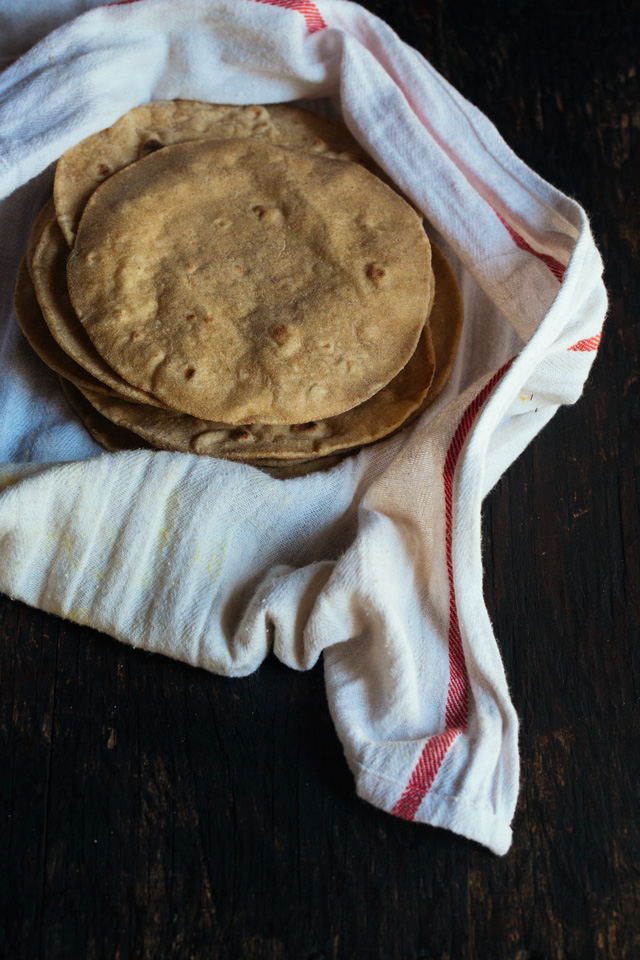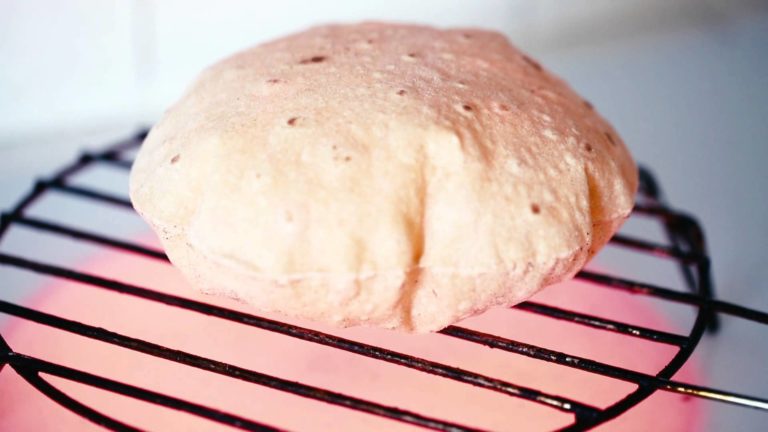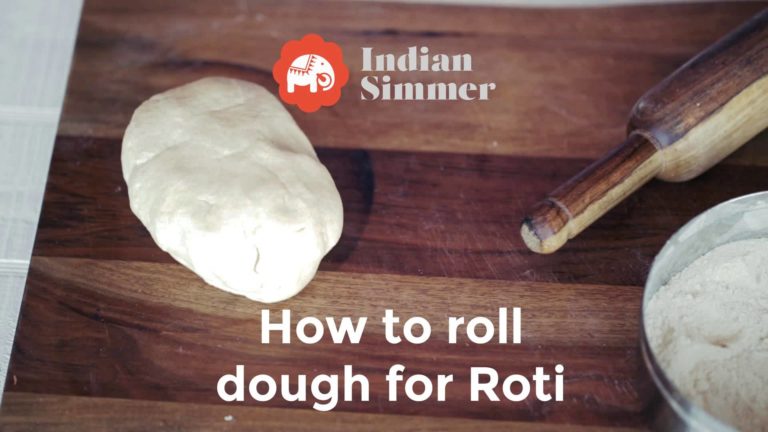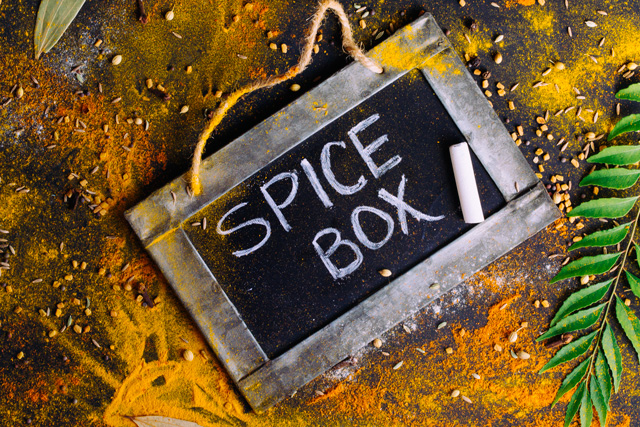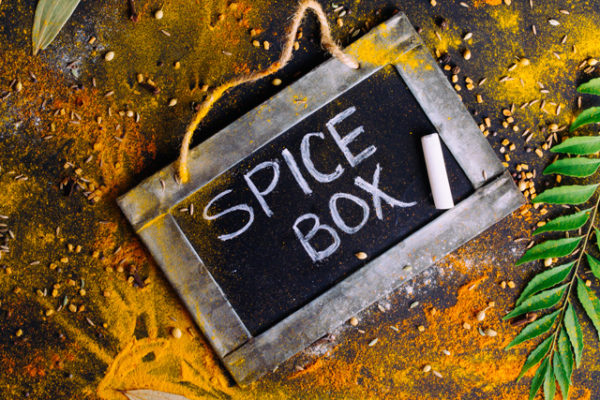
Yes, yes I had to come to this post one day! I had to address this elephant in the room and answer some questions about what I stock in my Indian spice pantry. Indian cooking can be intimidating when you are starting. I remember myself as a kid leaning over her kitchen door, watching her in awe when mummy would cook in her 4×4 ft. small kitchen, throwing spices into the karahi (wok) like a magician. The aroma, the flavors and the art of combining them together was intoxicating. When at the same time the sight was hypnotizing, it was also confusing because I had no clue why hing went only in dal tadka and not in curry and why when she used a bay leaf, never used a curry leaf for the same recipe. But then slowly and steadily when I got the courage to enter that kitchen and hold the masala dabba (spice box) in my hand, I started using those spices myself, one recipe at a time and learned the art and science of Indian spices.
So lets take it slow first. Lets start with a few spices at a time and then slowly grow this list. Something in my mind says 10 is a good number so lets start with the top 10 Indian ingredients that I have in my spice pantry. This will be an ever growing list and we will keep adding ingredients to it until the list is exhaustive, which I do not think will ever happen considering the wide variety of spices used in Indian cuisine.

Turmeric (Haldi):
If there’s one spice you cannot live without when starting an Indian kitchen, it has to be turmeric or haldi as we call it in hindi. Doesn’t matter what part of the country you belong to if you are cooking Indian food, chances are you are using turmeric. It can be used fresh, dry or in ground form. Turmeric belongs to the ginger family, probably that’s the reason fresh turmeric looks very much like a ginger root only yellow(er). I feel fresh turmeric has a stronger flavor than a powdered one but dry powder is what’s commonly used in an Indian kitchen.
More than flavor, turmeric is used to add color to food. In fact, some people call it “Indian saffron” and back in the old days, it was used as a cheaper alternative to saffron. Be it a simple stir fry, a dal (lentil soup), a spicy curry or an Indian pickle, turmeric is used everywhere. In addition to being called on for its brilliant yellow color and mild flavor, turmeric is also used as a preservative. To make pickles, my grandma would coat raw mangoes or vegetables with a mixture of salt and turmeric and leave them out in the sunlight to dry. Those pickles would last for years! Turmeric is also used to color cheese, yogurt, spice mixes, salad dressings and even butter and margarine.
Outside of the kitchen, this spice is known for its therapeutic properties. Did you know that turmeric is a fabulous anti-inflammatory agent and an antiseptic? As a child, whenever I came home with a cut or bruise, my mom would rub a paste of turmeric and water on the afflicted area and it worked like magic. If I had a fever, she would give me haldi doodh (a little turmeric mixed with warm milk). In India, when a girl is about to get married, she gets a body massage with a paste of turmeric, as it is believed to improve the skin tone and considered a great anti-aging agent.
It is due to all these medicinal, culinary and cosmetic qualities that turmeric has earned a sacred place in Indian culture and history, especially in a Hindu home.
Indian Bay Leaf (Tej Patta or Tamalpatra):
Although from the bay leaf family, Tej Patta or Indian bay leaf is slightly different or maybe a lot different! Indian bay leaf is much larger in size than a commonly found bay leaf and is a lighter shade of green. When you look at the two you will see that Indian bay leaves have three prominent veins running through them whereas a normal bay leaf has one single vein running through the middle. The former has a more sweet cinnamony flavor whereas the other, which is believed to be mediterranean, is slightly lemony and bitter.
Crushed or used as whole, Indian bay leaf is mostly used in dried form in Indian food. Same as other indian spices, it is better to first roast or cook in oil before using this spice because the process will bring the best flavors and aroma out of it. It’s widely used in curries and gives biryani the flavor that people crave for. Tej Patta is also ground with a few other whole spices to make garam masala.
Cumin (Jeera):
Cumin or jeera seeds come from an annual plant which is actually from the parsley family. Another quintessential in every Indian kitchen, it has a strong, distinctive aroma and can be used whole, ground, roasted or as is. There are two types of cumin: white and black. Black cumin, also known as royal cumin or shahi jeera, has a slightly sweeter taste to it. It is also a bit more rare than white cumin.
Both types of cumin have a warm and earthy flavor, which works really well with lentil soups or hearty stews. Roasting adds to the aroma of the cumin seeds, making them perfect to flavor cheese or breads. Roasted, ground cumin seeds also make a wonderful garnish for raita (a cooling, yogurt-based dip) and yogurt. Another excellent use for this spice? Cumin aids digestion, and the most common way it’s enjoyed in India is in a beverage called jal jeera—an Indian form of lemonade (in Hindi, jal means water and jeera means cumin).

Mustard Seeds (Sarson):
Mainly known for its pungent flavor mustard is one of those spices that’s used in all regions of India in some form or another. From sarson ka saag (cooked mustard greens) in Punjab to aava pindi (powdered mustard seeds preserved in oil) in the south, mustard plays a big part in Indian food culture and traditions.
Unlike in the Western hemisphere where yellow mustard rules, black mustard is used more frequently and found more easily in India. Mustard seeds make a good ingredient in salad dressings, curries and vegetables. This spice also plays an important role in preserving pickles. Oil extracted from its seeds (mustard oil) in India is as common olive oil in Italy (of course after ghee)! Before vegetable oils and other refined cooking oil hit the markets, mustard oil was used for almost all preparations in Indian kitchens and homes, from cooking to body massage, because it’s inexpensive and very good for health. However, if you’re not used to it, it might take time for your palate to get used to its strong taste.
When I was a child, my grandma would put a teaspoon of salt with a few drops of mustard oil in my palm and ask me to massage my gums with it. She said it would make the gums strong and whiten the teeth. From toothache, colds and stomach disorders to bronchitis and rheumatism, mustard is said to heal everything. Drink mustard tea before bed and kiss your fever or cold goodbye—at least that’s the remedy I grew up with!
Red Chili (Lal Mirch):
Lal mirch, or Indian chili, is very similar to cayenne pepper, which we can find easily in the US and Europe. It is believed that chili was first introduced to India by the great Portuguese explorer Vasco da Gama. The spice was a welcome addition to the cuisine and India’s climate helped cultivate many varieties of chili across the country. Unlike many Mexican or American chili powder varieties where salt or spices are added to the pepper, Indian chili powder is pure ground red pepper. Dried red chilies are powdered after being sun dried until they are nice and crisp. The red chili peppers range from orange to dark red and have a sharp aroma to it than can be a little bit towards the pungent side and have a very strong bite. So try not to get your nose too close to that box of red chili powder!
Used both as whole and powder, Indian cuisine uses mainly two varieties of chili powder- the usual red chili powder which is fiery hot and and the milder kind, which is called kashmiri lal mirch. Kashmiri mirch is named after Kashmir, the norther most state of Indian where it comes from. It has a much milder heat and, like turmeric, is used primarily to add color to the dish. The tandoori chicken and beautiful red curry that your local Indian restaurant serves get their vibrant hue from kashmiri lal mirch. Chili powder can be used in practically any dish. An Indian cook cannot live without lal mirch; we like our meals on the spicy side!
Fenugreek Seeds (Methi):
We had a space by the house next to his garden where papa grew some vegetables and some herbs. Mustard greens, cilantro and fenugreek leaves were some of the produce that we practically enjoyed all year long because they are so easy to grow. So much so that I even grew it in my patio garden after moving to the US. Just sprinkle a few seeds in the ground, water them and enjoy fresh greens all year long. The plants, when mature, bear fruits and, seeds then dry and can be either used as a spice or recycled again to grow more greens.
Fenugreek or methi is used very widely in Indian cuisine. Greens are used to make bhaji or curries. Leaves of kasuri methi, one of the varieties with a stronger aroma, are dried and used to add extra flavor to rich curries and lentil soups and seeds are used in just about anything. Stir fried vegetables, kadhi (yogurt soup), pickles and curries. This yellow to slightly amber colored cuboid spice is bitter in taste, so it is roasted or cooked in hot oil to reduce the bitterness. It’s used whole as well as in powder form. Some of the most common spice mixes, it is a part of panch foran and sambhar masala.

Asafetida (Hing):
Let me tell you off bat, if you are one of those people (like me!) who smells their spices and ingredients before using them then you are never going to be using Asafetida or hing as we call it. In its raw state, it has a pungent, sulfurous smell. The odor is native to the entire plant, including the stems, from which this spice is derived. Not very common in the Western world, it is a staple in Indian cooking (commonly used in tempering lentils or mixed with ground rice), and it gives a lovely flavor to dishes when cooked in hot oil.
Asafetida has great medicinal qualities, too. I swore by heeng (Hindi for asafetida) when I had my first daughter. My mom, who was there to help me, would run to the kitchen cabinet to grab a bottle of asafetida every time she suspected my daughter had gas or a cough—or even for her oil massage. And those are just a few of its therapeutic uses!
Apart from being a fabulous digestive aid, asafetida is also believed to help with breathing problems and lung diseases like asthma and bronchitis. Back in the days when people were more superstitious, it was said that the strong smell of asafetida could help drive evil spirits away from children. It was also said to help get rid of alcoholism and anxiety. I’m not sure how true any of that is—but I grew up listening to such stories and, in some way, started believing them.
Asafedita is very commonly used in lentil dishes. Add a pinch (or even less) in hot oil and it will perfume the whole dish and aid digestion. Just remember, it’s potent—a pinch goes a long way.
Coriander Seeds (Dhaniya)
I cannot spend a single day in my kitchen without using coriander seeds. Their sweet, earthy smell perfumes my kitchen and house and I love it. Coriander, better known in the US as cilantro, is a very commonly used herb in India. It’s used to make marinades, chutney and pesto, cooked in curries and used as garnish. The fruit from this herb bears small seeds which, once dry, have a sweet, citrusy flavor and a nutty, spicy smell. In Hindi, coriander seeds are known as dhaniya.
Dhaniya is a must in an Indian kitchen. I buy whole seeds from the market, roast them either in the oven or on medium-low heat in a pan. When you roast them on low heat, they slowly start giving out a beautiful smell and get slightly darker—it’s the perfect way to use coriander seeds for full flavor. Then, coarsely crush the seeds and make a marinade or rub on a piece of meat with some salt and citrus before grilling. Or make a powder to use in curries. Or, like my mom, mix them with a couple of other spices and stuff your veggies with them before baking. Coriander seeds can make anything and everything taste like Indian food should taste!
Cinnamon (Dal Chini)
More than candy I have to keep my jars of cinnamon sticks away from the butterfly for every chance she gets she would steal a stick or two and very happily indulges herself into those small wood quills which are actually barks of a tree, like she would her lollipops. “Its sweetness warms me from the inside Maa”, she says! She’s the writer in the family, I am telling you. Her command on words and her ability to express herself is already way better than me and she’s just mere six. Not a huge fan of complex flavors but she can easily live on cheese rinds and cinnamon sticks! Kids are surprising to say the least and so are these sticks.
Pronounced Daal-chee-nee in hindi these sure are packed with a lot of good things for a humble looking bark of a tree. Great source of manganese, fiber and calcium cinnamon works wonders for diabetes patients. Famous for its warmth probably because of its anti-clotting properties, that keeps the blood warm cinnamon has a sweetness to it hence the last name “chini” which is hindi for sugar. A native of Sri Lanka, cinnamon is mostly used in sweet dishes like cakes, puddings and breads (think cinnamon rolls!) in the western countries when they were primarily used in meat dishes, as preservative in other parts of the world like India. Slowly it made its way into curries like vindaloo and now garam masala, the quintessential Indian spice mix is incomplete without cinnamon.
Its used both as whole or powdered form but I like sticks better because they stay fresh longer when powder just looses its aroma faster. As much as I like cinnamon in my pulao (spiced rice dish) and warm curries, I love to add a hint to a creamy kheer (rice pudding).

Curry Leaf
We Indians love curry so much that we named a whole plant after it! I remember the time when as kid I’d fish the curry leaves out of the kadhi pakora mummy would make and as a result would get a long talk over the nutritional qualities of the leaf and only an ignorant can throw away those precious qualities instead of eating them. At that time it seemed like an unsolicited advice but today I try and tell the same to my daughter. Packed with carbohydrate, fiber, calcium, iron and multi vitamins, curry leaf not only perfumes your whole house when cooked in the kitchen but also is very good for your heart, improves the insulin levels in your body and also has several antioxidant qualities.
With the passionate sputtering of the leaves when thrown into a pan of hot oil to be later mixed in a vibrant curry or a leisurely dal (lentil soup) or the unhurried toasting of the leaves in an open flame to be later crushed and sprinkled over a sour soup, curry leaves definitely qualify as one of my most loved ingredients to cook with.
I will soon come back with another set of my favorite spices and will chat more about them. Until then feel free to let me know if there’s any spice in particular that you’d like to discuss so that we can add it to the next list. And don’t forget to admire them a little more when you cook with them next time.
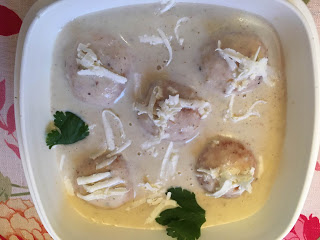

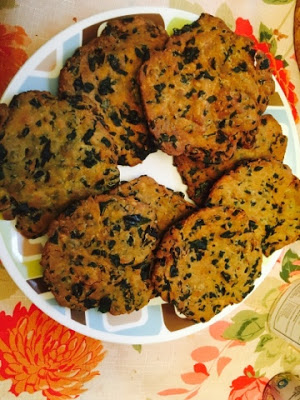
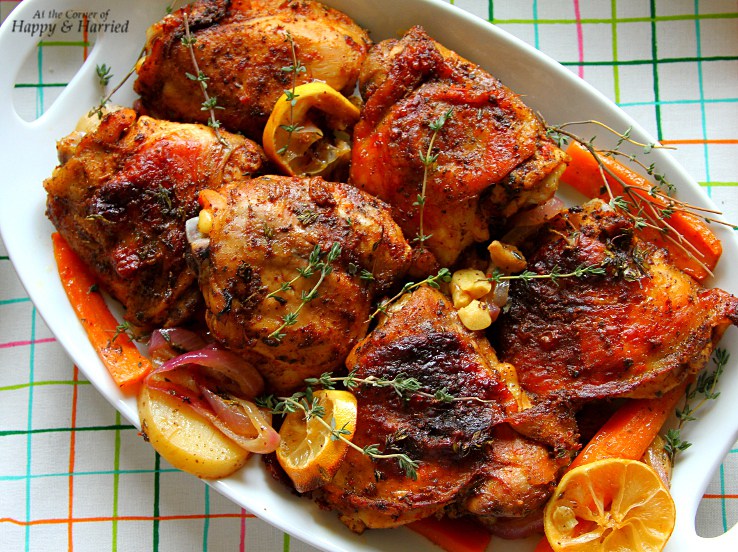
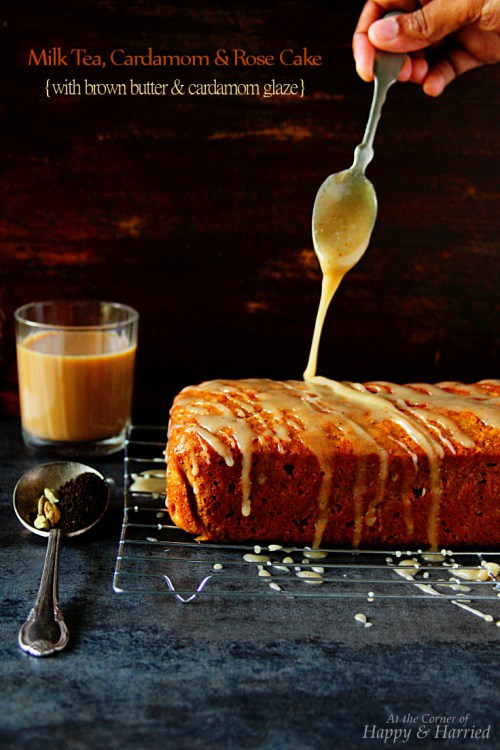
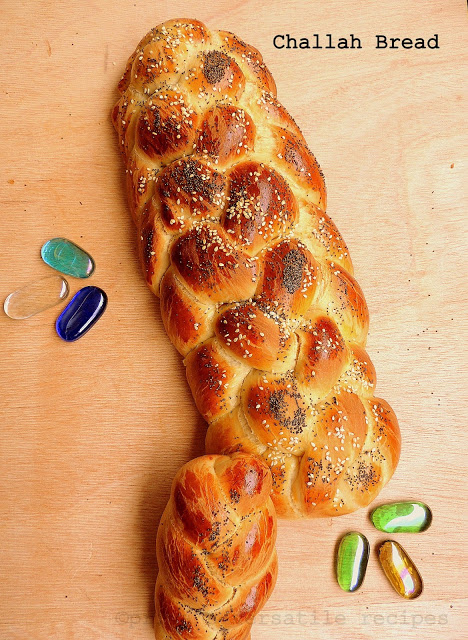
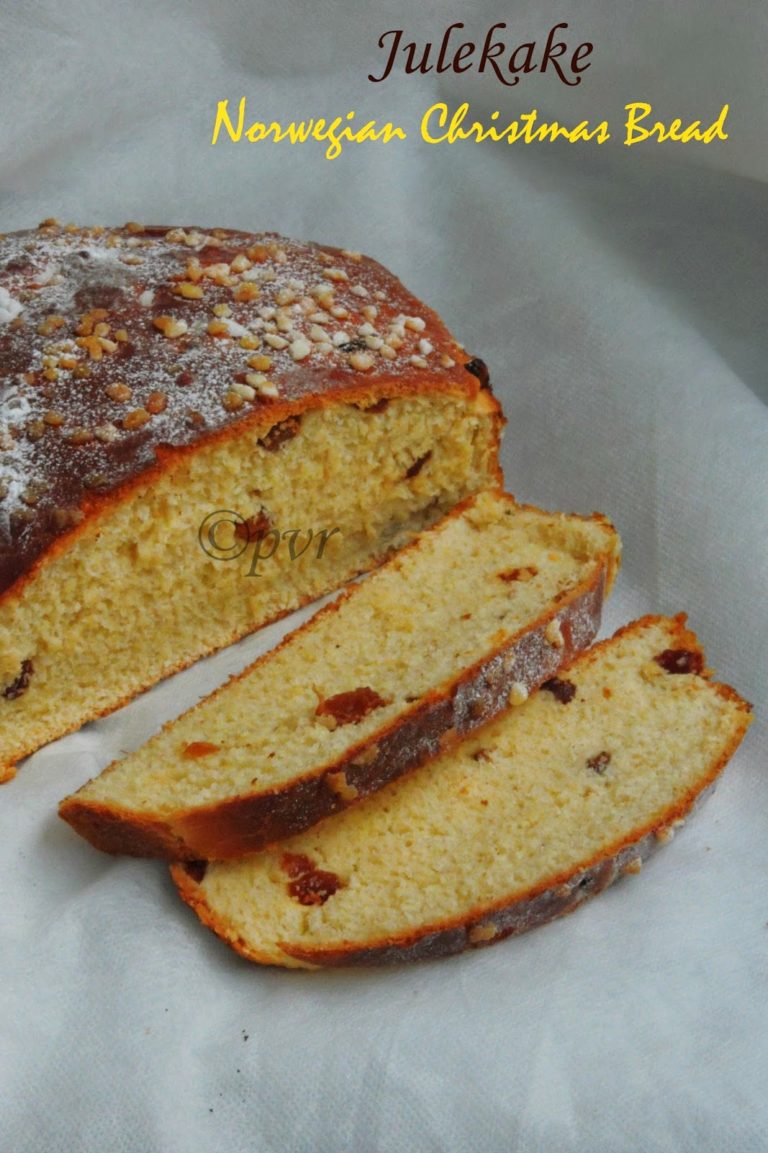
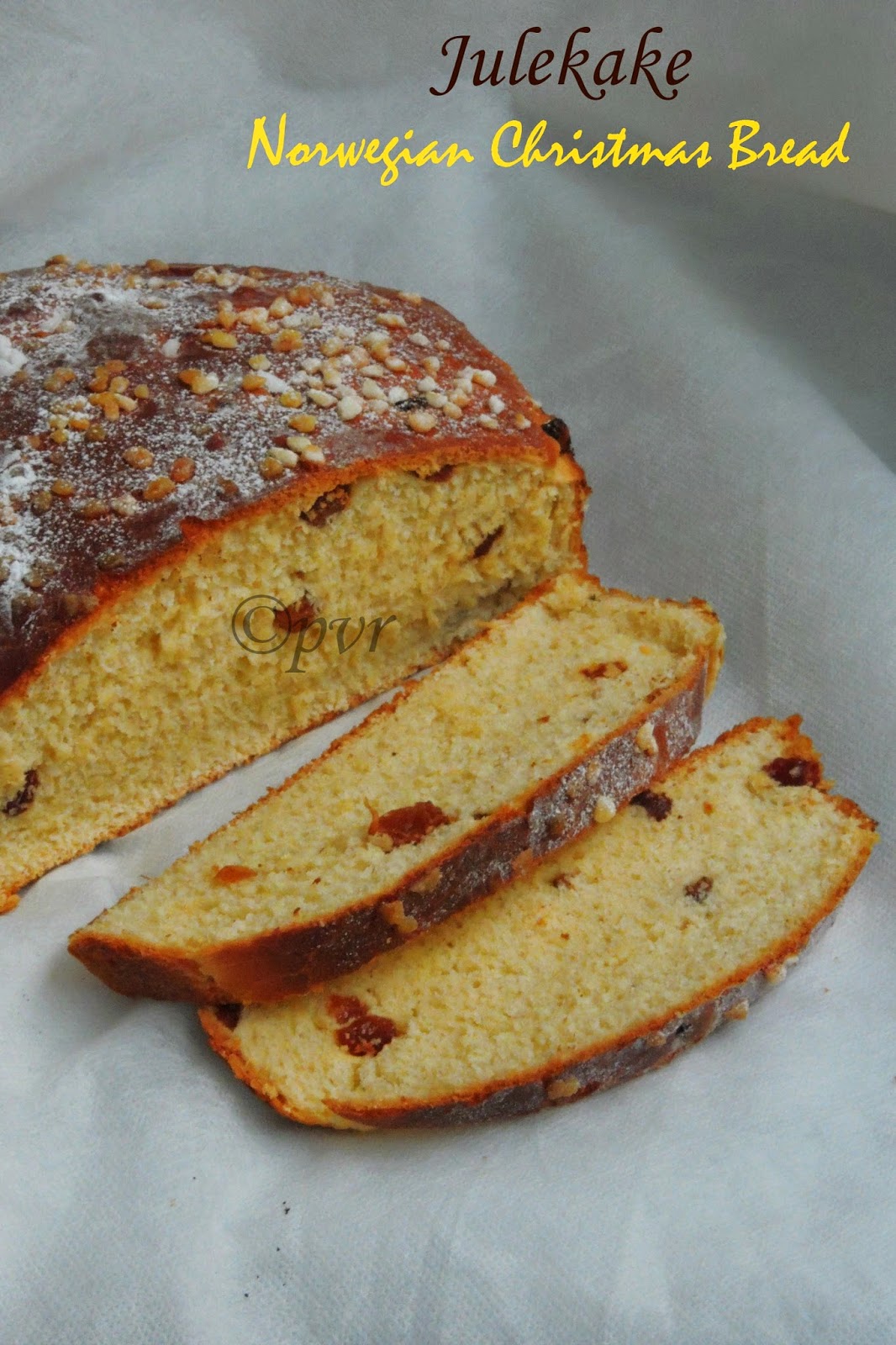
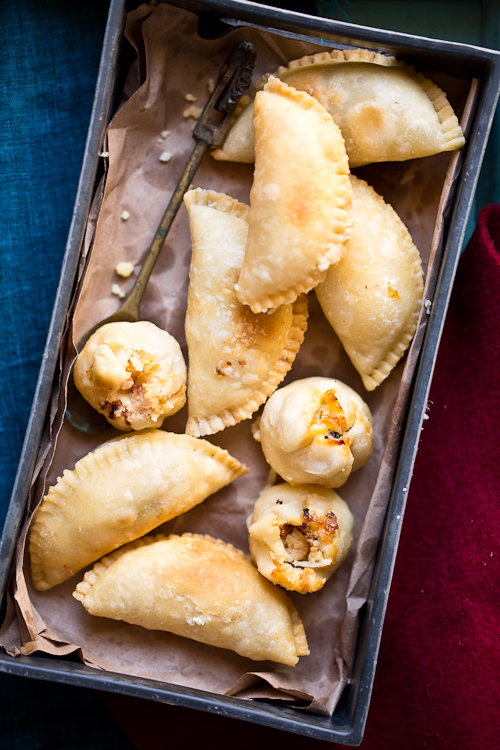


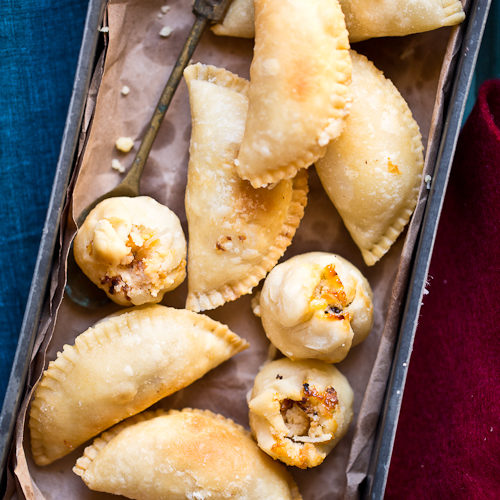
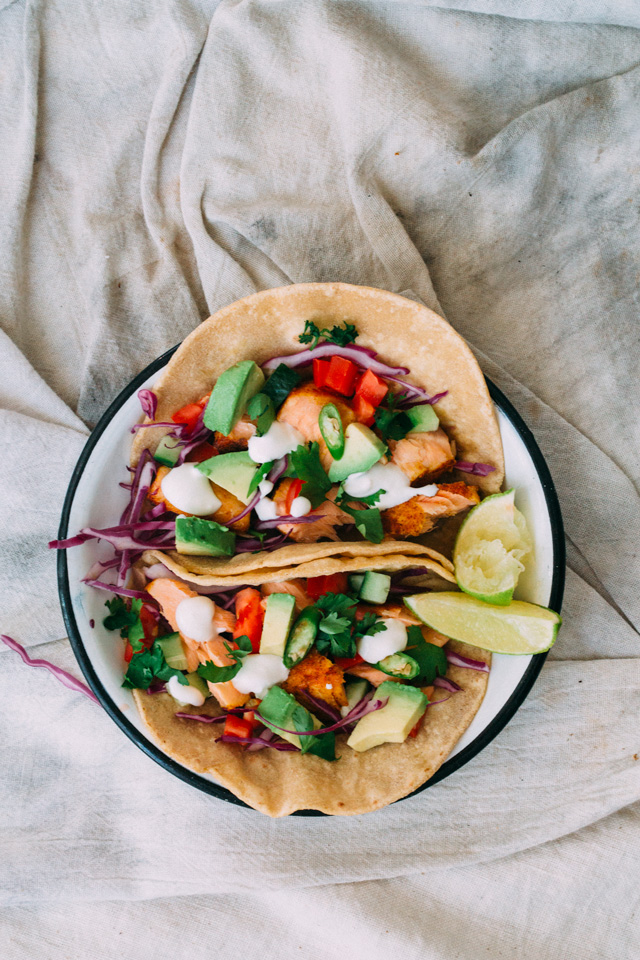


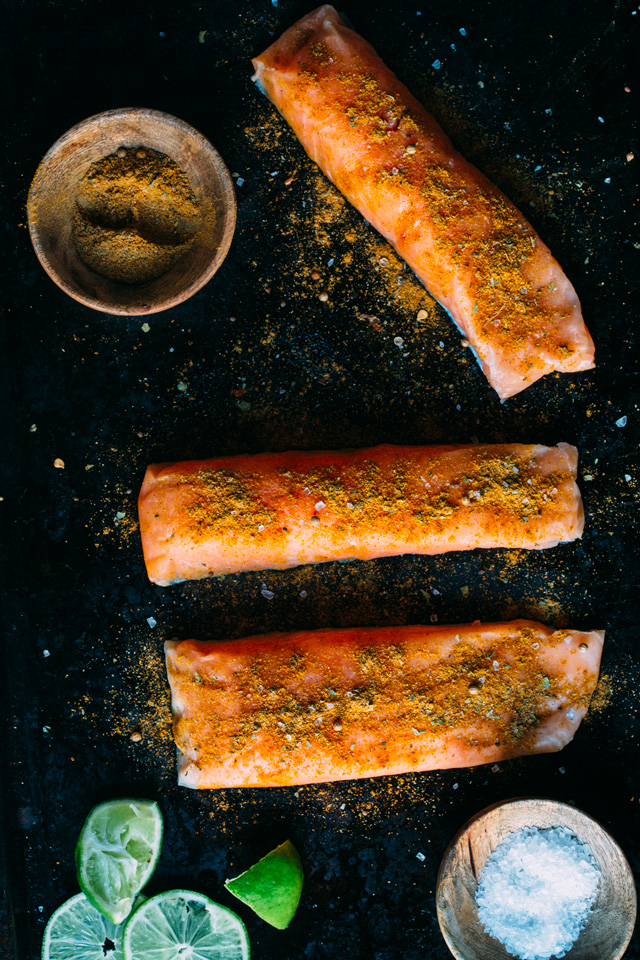 Wait, I meant parenthood is tough. Doesn’t matter if you are a mum, dad, grandparent or a caregiver. Caring for these little creatures is a tough job. Caring for two, is tougher. Caring for two, five years apart and with completely different interests and needs, even tougher! Of course there are perks. Of course there’ s a lollipop and a princess sticker waiting after every doctor’s visit. Like this quiet one, with she burrowed in my arms and I listening to the sound of her breath going up and down like a soft breeze. But then very soon that breeze turns into a storm when the monkey wakes up and the next thing you know, things are going in the toilet, bugs in mouths and crayons all over your white walls (“snow slope” painted to be precise!). You then question the choice of color for the walls which looked absolutely breathtaking in the photographs of that designer mom with four kids (exactly the double of what I have) AND a dog, a speck clean house, with “real life” plants all over and a dashingly dressed husband with gel laden hair.
Wait, I meant parenthood is tough. Doesn’t matter if you are a mum, dad, grandparent or a caregiver. Caring for these little creatures is a tough job. Caring for two, is tougher. Caring for two, five years apart and with completely different interests and needs, even tougher! Of course there are perks. Of course there’ s a lollipop and a princess sticker waiting after every doctor’s visit. Like this quiet one, with she burrowed in my arms and I listening to the sound of her breath going up and down like a soft breeze. But then very soon that breeze turns into a storm when the monkey wakes up and the next thing you know, things are going in the toilet, bugs in mouths and crayons all over your white walls (“snow slope” painted to be precise!). You then question the choice of color for the walls which looked absolutely breathtaking in the photographs of that designer mom with four kids (exactly the double of what I have) AND a dog, a speck clean house, with “real life” plants all over and a dashingly dressed husband with gel laden hair.